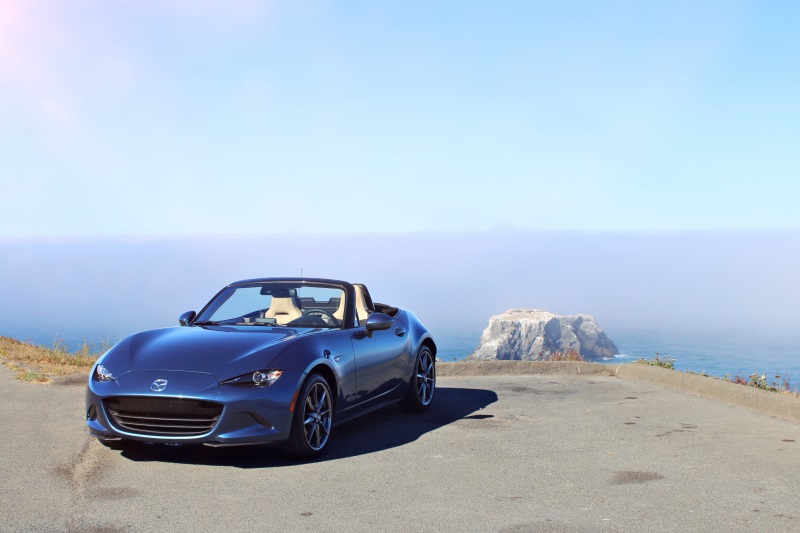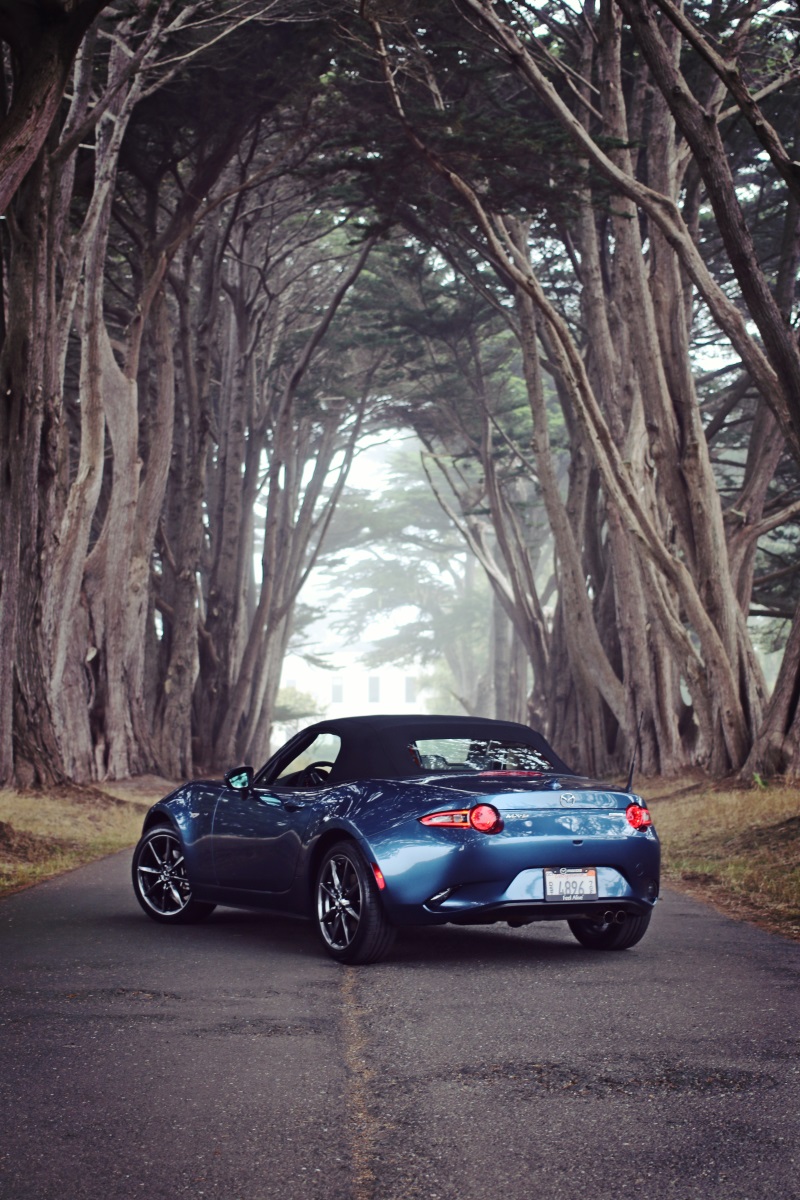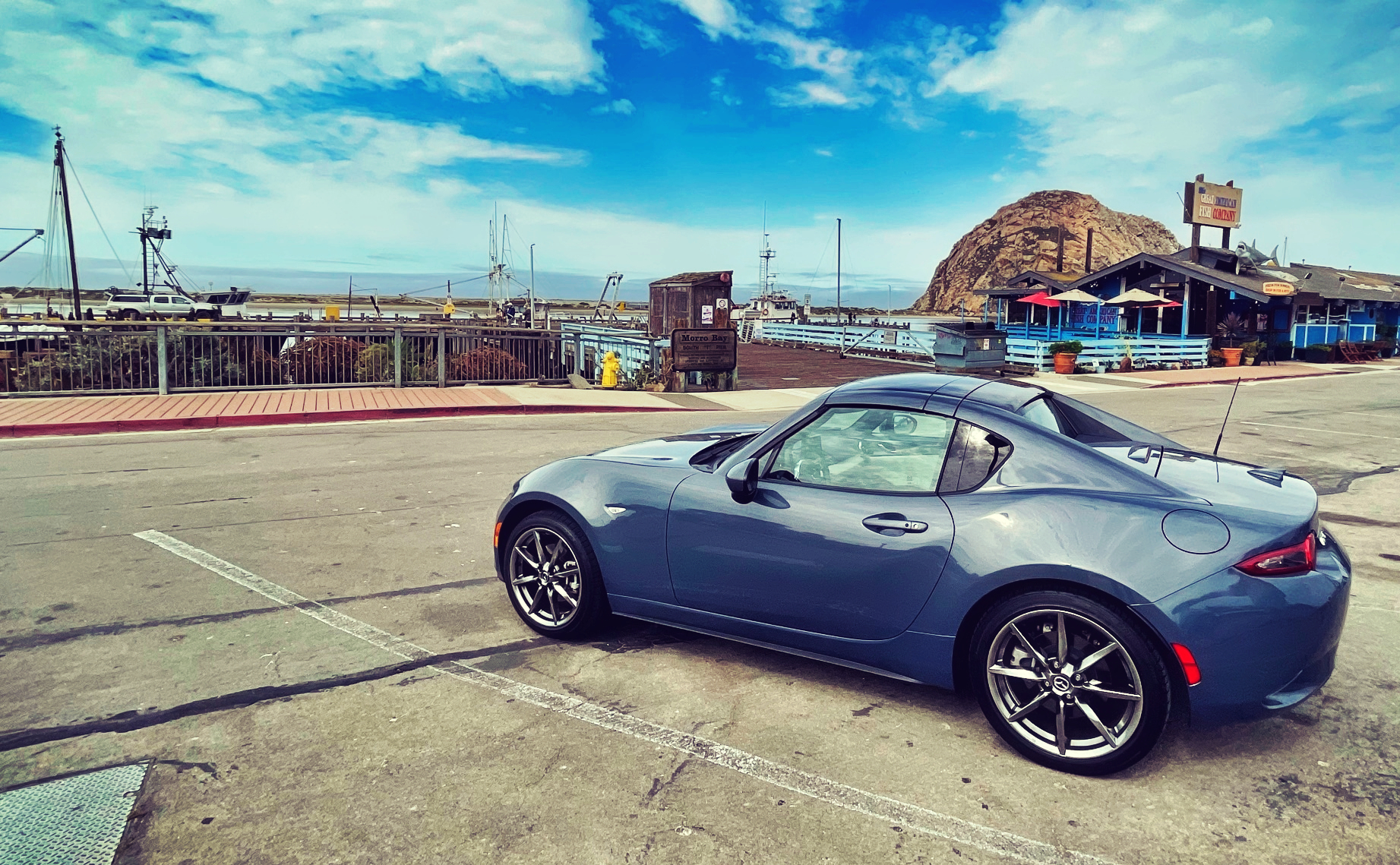I have spent a lot of time behind the wheel of the new Mazda MX5, both the Roadster version and the RF Coupe. From road-tripping up the California coast to ripping around the backroads of Central Texas, I have come to hold some pretty strong opinions about the MX5. It is very good, it looks great, but mainly it is the last true sports car for the people.
Sports cars have been slowly dying since the 1970s and as the decades progressed there were fewer impractical, small, and incredibly fun cars to choose from. As British Leyland folded and the European makers pulled out of the US market, small sports cars were replaced by hot hatches from Japan. This point was made on Top Gear a few times, as it turns out a TVR or Jensen Healey doesn't work great for runs to the Home Depot, but then again a small hatchback doesn't really give you the thrill of the wind in your hair that a roadster does, or look as cool.
But when my father was a young man the streets were full of Triumphs, Datsuns, MGs, Austin Healeys, Fiats, Alfa Romeos, and many more fun cheap sports cars. The formula was simple, front-engine, rear-wheel drive, two seats, and a folding top. By the 80s and 90s, there were just a few lingering sports cars being sold in the US, even Alfa Romeo kept the sports car flame alive all the way until 1994 by selling a car they started making in 1966. But in 1989 Mazda dusted off the old sports car formula and introduced the new MX5 Miata and the people had a sports car again.
The story of the MX5 starts way back in 1976 when automotive journalist Bob Hall, met Kenichi Yamamoto and Gai Arai, head of Research and Development at Mazda. As they discussed the car brand and what kind of cars Mazda should make in the future, Bob told them to make an inexpensive roadster, which was dying off in the mid-70s. A few years later Bob was hired at Mazda USA to work on product planning and in 1982 he was given the go-ahead to develop what would become the first generation MX5.
The first Miata was everything it was supposed to be, light, fun to drive, and affordable, it quickly became the darling of the motoring press winning countless awards, including Car & Driver car of the Year. While other cars have come along to compete in the sports car market, none have been able to match the driving dynamics to dollar ratio of the MX5, in fact, the MX5 is the only car among its peers that has kept not only its proportions but its pricing in line with the ethos of the original. In 1990 a brand new MX5 had a starting price of around $14,000 adjusted for inflation it puts it right in line with the current MX5's base price of $25,730, something few other cars have been able to maintain.
We can't talk about the MX5 without talking about the other inexpensive sub $26,000 sports car, the Fiat 124, which is based on the Mazda MX5. However, Fiat 124 notwithstanding, every other car in its class is nearly double the price or more of a new Miata.
While the MX5 is not going to be the fastest car on that list, it is just as fun to drive, legally at least. The lower MSRP coupled with Mazda's record on reliability and lower cost of ownership means the MX5 has a much easier case to make as a second car for the weekends than many other more exotic sports cars on the market. This lower cost is also why the Mazda MX5 is one of the most raced cars in the world and the most popular race car in North America.
To be a car of the people a car has to be affordable but it must also transcend status and class, the MX5 is truly classless. Attending a Mazda MX5 meet and you will run into everyone from college kids who bought their first used MX5 just a few weeks ago to older professionals who keep an MX5 for their weekend toy. It is a community of enthusiasts that have a deep connection to a car and brand, something that is uncommon in more affordable cars.
Many MX5 drivers are hooked from their first time behind the wheel, and once you have driven one it is easy to see what all the hype is about. The MX5 is built on the Japanese archery principle of Jinba Ittai, "where horse and rider act as one." Mazda describes that driving a Miata should feel like you are controlling an extension of yourself, and having logged lots of miles on lots of roads and tracks, they nailed it. It takes some effort to get out of an MX5 a spirited drive and not have a massive smile on your face, driving it even to the store feels like a bit of an event, and that's how a sports car should be.
As someone who has owned a lot of sports cars from classics to modern, the new MX5 is incredibly impressive, somehow the team at Mazda has captured all the feelings I get when I drive my old Austin Healey, wrapped in a modern chassis with heated seats and a great sound system all for around the same price as Hyundai Sonata. Sure it might not be as practical. But who says we always have to be practical?




.jpg)
.jpg)





_websize.jpg)









